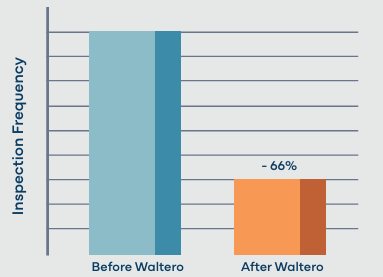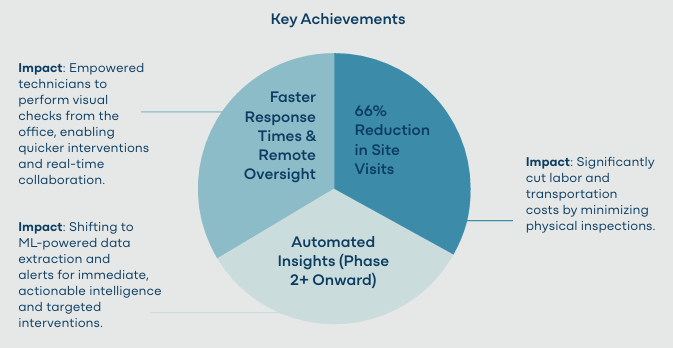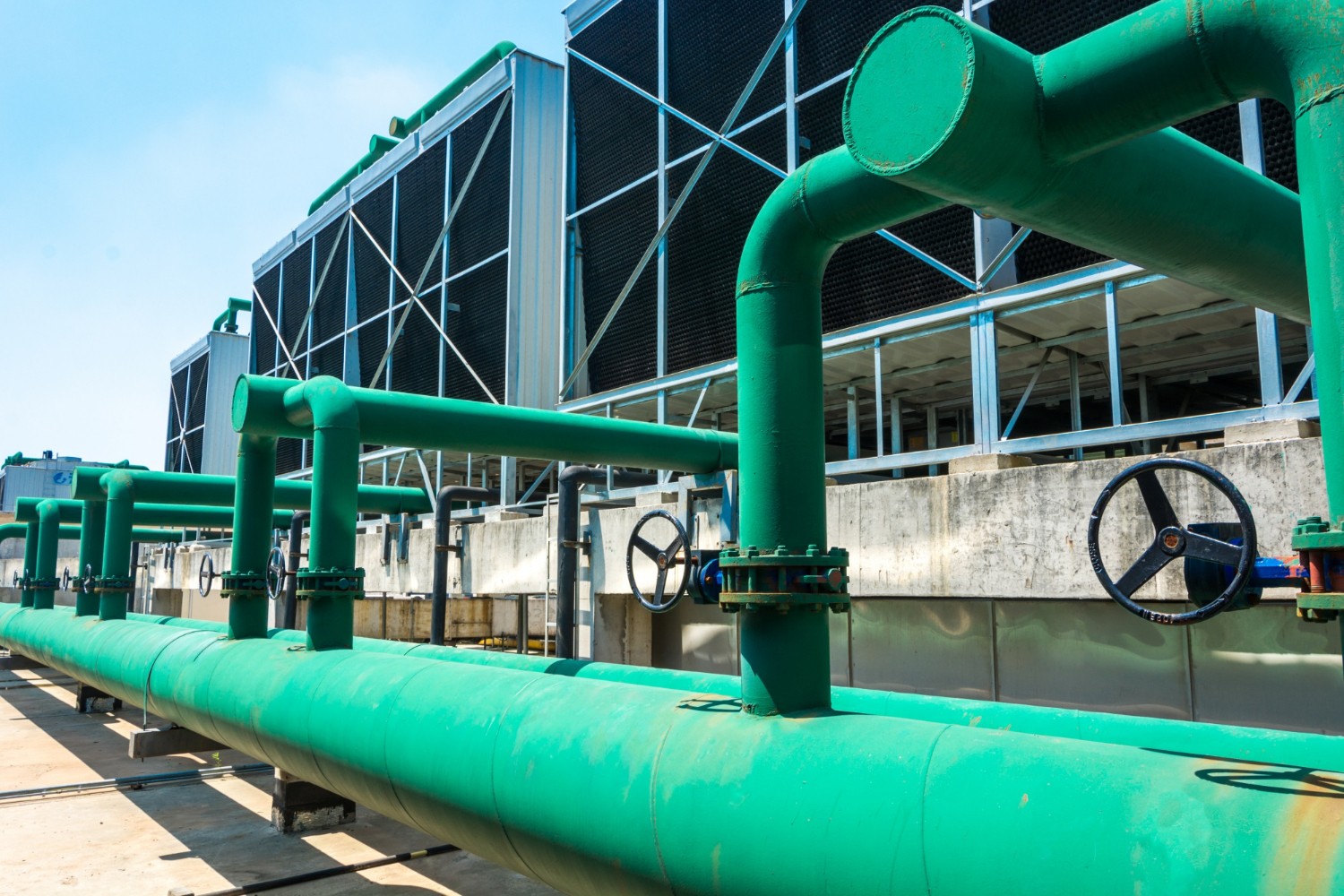Enhancing Operational Efficiency and Building a Future-Ready Water Infrastructure VA SYD, the regional water utility in Skåne, Sweden, has partnered with Waltero to revolutionize its water inlet monitoring and maintenance. This collaboration leverages Waltero’s cutting-edge camera-equipped W-Sensors and the intelligent Mimir cloud platform, implemented through a strategic phased plan. The result? VA SYD is achieving significant operational savings and laying the groundwork for a truly predictive, scalable, and resilient water infrastructure management system. This case study highlights a successful partnership, beneficial to both VA SYD and Waltero, demonstrating a clear path to modernized utility operations.

Background & Objectives:
The Challenge of Traditional Monitoring
Maintaining thousands of water inlets has traditionally demanded frequent, time-consuming physical inspections to check for debris blockages and monitor water levels. These tasks become even more challenging and critical during unpredictable weather events. VA SYD recognized the need for a more efficient, proactive approach to:
- Reduce Operational Overhead: Minimize the labor, fuel, and time associated with manual
inspections. - Improve Response Times: Address potential problems faster to prevent severe blockages
or flooding. - Enhance Overall Infrastructure Management: Move from a reactive to a predictive
maintenance model.
Waltero’s W-Sensor, paired with their Mimir platform, offered the ideal solution: consistent imagery and machine learning (ML) analysis that could fundamentally shift maintenance from reactive to preventive. VA SYD actively drove the solution forward, integrating their system with Waltero’s Mimir platform to unify infrastructure data and automate decision making.

“We have a good collaboration with Waltero, and their product has already provided significant benefits to our operations at an early stage. Our team is now able to perform visual inspections from the office instead of having to drive out to the monitored facilities.”
– John Hägg, Development Engineer, VA SYD
Three Phases of Implementation: A Roadmap to Success
The partnership between Waltero and VA SYD was structured around a pragmatic, three phase implementation plan, ensuring continuous learning and optimization at each step.
Phase 1
Image Collection
Phase 2
Smart Insights
Phase 3
Predictive
Monitoring
W-Sensors are
deployed to capture
initial image data from
water inlets. This phase
focuses on gathering
visual intelligence and
learning from real-world
conditions, providing
immediate remote
visibility
Building on collected
data, Waltero’s AI trains
to automatically extract
actionable metrics
like water depth and
blockages. This enables
intelligent, automated
alerts for faster
response and better
resource allocation.
As our AI matures,
it will dynamically
adapt monitoring
frequency and predict
future blockages.
This phase empowers
strategic decision
making and optimal
resource deployment
across the entire water
infrastructure.
Phase 1: Remote Visual Inspections & Environmental Learning
The initial phase focused on deploying W-Sensors at selected water inlets to gather
foundational image data and learn from real-world field conditions. Images were uploaded
to Mimir for manual annotation and baseline analysis, feeding directly into VA SYD’s system
for immediate utility. This phase was crucial for both data collection and strategic discovery.
Key Discoveries and Learnings:
- Immediate Value of Visual Data: Even without full AI automation, remote access to
images drastically reduced inspection trips. - Dynamic Nature of Blockage: Observations revealed that blockages could form
either at the waterline or from debris accumulation at the base, requiring
comprehensive monitoring. - Optimal Camera Positioning: A wider view, positioned at a distance from the grid, was
essential for maintenance teams to get a full overview and avoid interfering with
cleaning routines. - Varying Monitoring Needs: Daily daytime images sufficed for routine checks, while
heavy rainfall demanded hourly, 24/7 monitoring. - Hardware Demands: Sensors required 3-5 year battery life and robust optics to
perform in all conditions (direct sunlight, low light, total darkness).

Operational Results from Phase 1:
- Routine inspections reduced by -66%, leading to substantial savings in labor and transportation.
- Maintenance teams gained the ability to review inlet conditions remotely, improving efficiency.
- A solid foundation was laid for smarter hardware and AI models in subsequent phases.
Phase 2: Sensor Upgrades & Smart Insights (Current Stage)
Leveraging the invaluable feedback from Phase 1, Waltero and VA SYD implemented significant hardware and software upgrades. This phase is currently focused on training Waltero’s ML model to automatically extract actionable data from images, enabling custom thresholds for automated alarms.
Hardware Enhancements:
- New Weather-Resistant Casing: Enhanced durability for all outdoor environments.
- IR Lighting: Ensures clear imaging in low-light and total darkness conditions (e.g., wells).
- Higher-Resolution Cameras: Provide the detailed input required for advanced ML analysis.
- Upgraded Battery Modules: Extend deployment cycles for longer uptime and fewer maintenance interventions.
In Parallel, Software Updates Were Deployed Remotely:
- Virtual Ruler: Enables precise measurement of water levels and rising speeds directly from images.
- API-based Rescheduling: Allows smart adjustments to monitoring frequency based on real-time weather forecasts.
Key Benefits Realized in Phase 2:
- Automated water depth and blockage detection via ML.
- Customizable alarms triggered when predefined thresholds are breached.
- Faster reaction times for remote teams, allowing for prioritized site visits base on real-time data

Phase 3: Predictive Monitoring & System Optimization (Future)
As the volume of image data accumulates and the ML model matures, Phase 3 will unlock highly sophisticated predictive capabilities. This will enable VA SYD to move beyond reactive and even proactive, into truly predictive maintenance.
Capabilities in Development:
- Adaptive AI: Dynamically adjusts image frequency based on weather forecasts and previous anomaly detections.
- Subtle Pattern Detection: AI will learn to predict where and when blockages are likely to occur.
- Prioritization Engine: Recommends where to send teams across the entire region based on risk levels and predicted needs.
Anticipated Outcomes from Phase 3:
- Region-Wide Insight: Enables strategic decision-making for infrastructure planning.
- Automated Scheduling: Site checks are tied to risk levels, optimizing resource deployment.
- Better Use of Resources: Longer asset life and significantly reduced emergency repairs, contributing to overall sustainability.
Early Results & Outlook: A Partnership Driving Real Value
The collaboration between Waltero and VA SYD has already delivered tangible benefits and
promises even greater efficiencies in the future.

- Operational Savings: Even in Phase 1, on-site maintenance runs decreased by a remarkable 66%, leading to substantial cuts in labor and transportation costs.
- Remote Monitoring: Technicians can now perform most visual checks from their desktops, dramatically improving response times and enabling real-time collaboration.
- Automated Insights (Phase 2+): As the project moves into Phase 2, ML-powered data extraction will empower teams with immediate, actionable intelligence, leading to even fewer site visits and more targeted, efficient interventions.
- Scalable and Future-Ready: With Phase 3 on the horizon, VA SYD will gain deeper, predictive insights, allowing for agile adaptation to changing conditions and system wide management priorities, paving the way for smarter city infrastructure.
Through this phased, collaborative approach, VA SYD is transforming its operational model from reactive to proactive and ultimately, predictive. Waltero’s camera-equipped W-Sensors and AI-driven Mimir platform are unlocking new efficiencies, providing deeper insight into water inlet conditions, and conclusively strengthening Skåne’s water infrastructure for the
future. With each phase, the utility is becoming not only more efficient but more resilient, proactive, and future-focused. This partnership stands as a testament to the power of modernizing essential public services.

